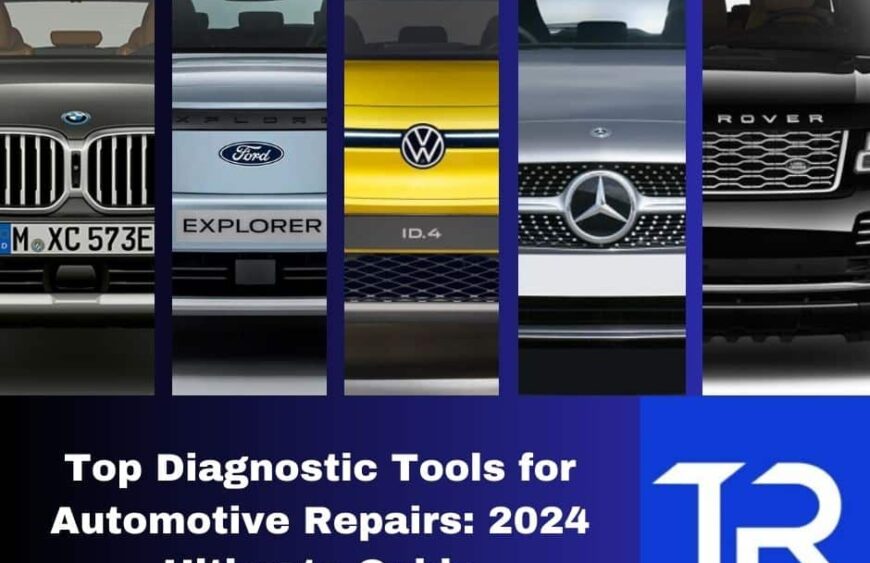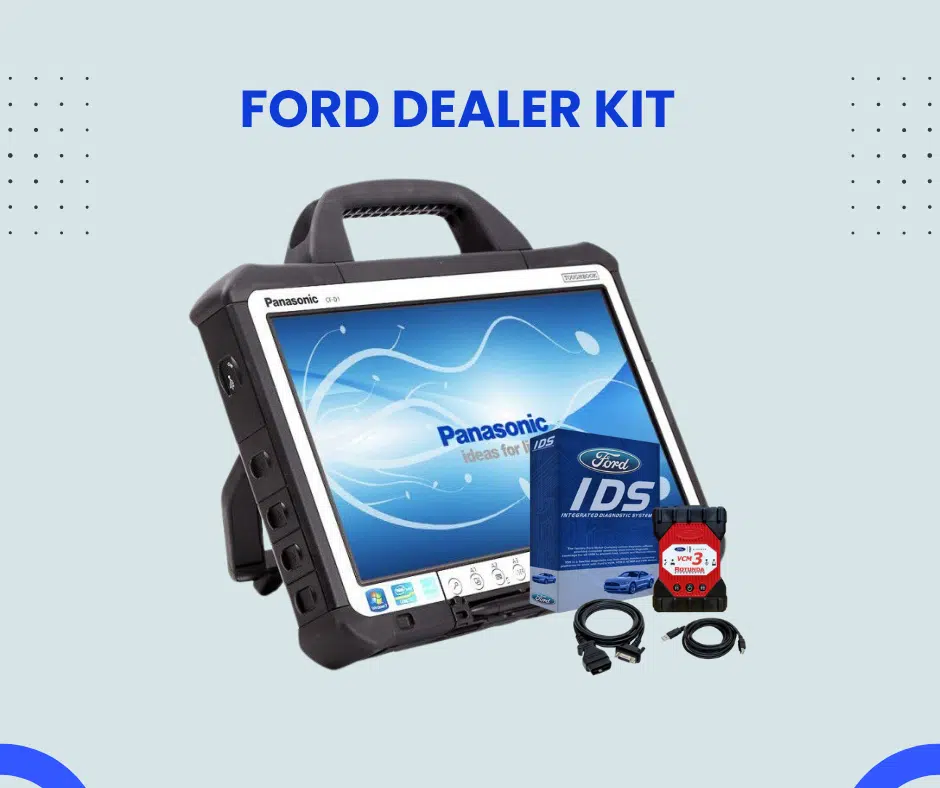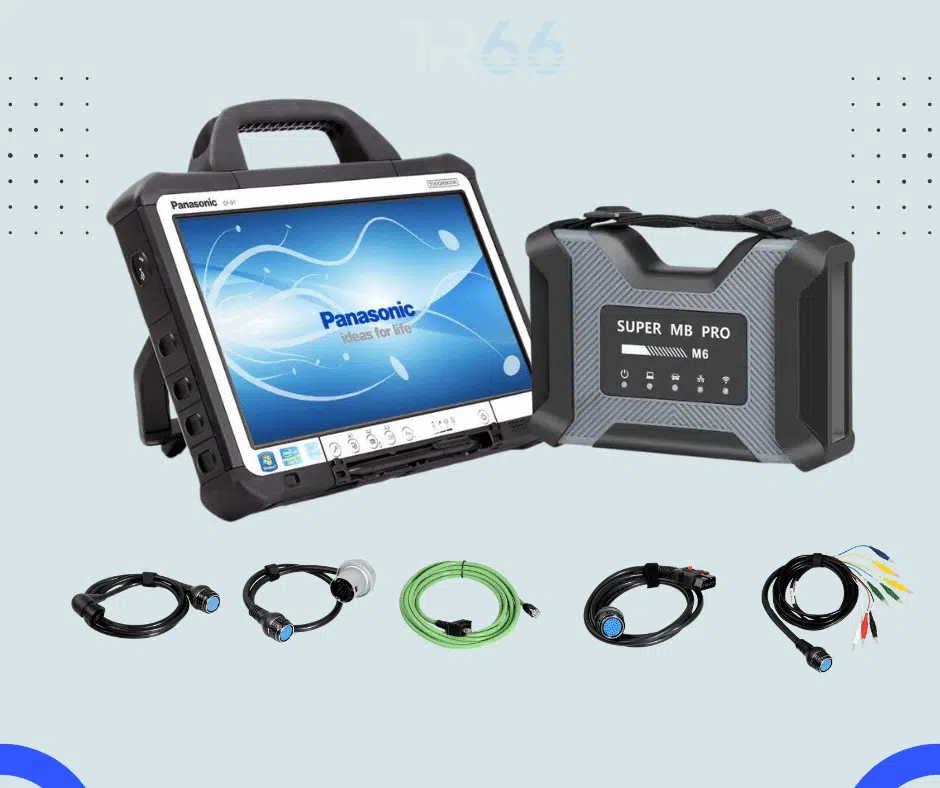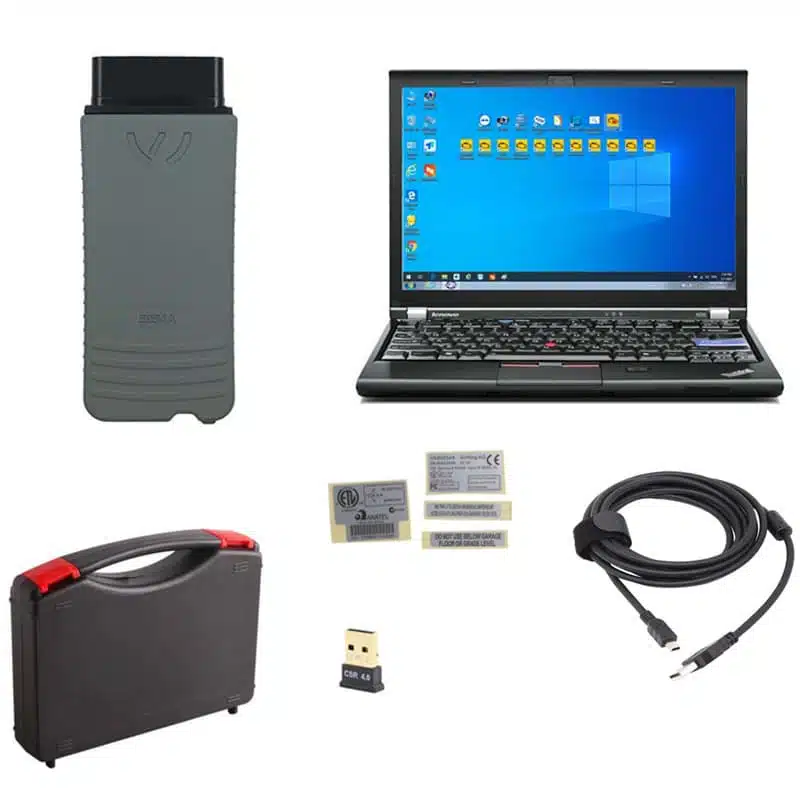Top Diagnostic Tools for Automotive: 2024 Ultimate Guide
August 1, 2024 2024-08-01 17:16Top Diagnostic Tools for Automotive: 2024 Ultimate Guide

Top Diagnostic Tools for Automotive: 2024 Ultimate Guide
Welcome to the ultimate guide for the best diagnostic tools for automotive repairs in 2024. Whether you’re a seasoned mechanic or a DIY enthusiast, having the right diagnostic tool is essential for a successful repair. In this comprehensive guide, we will explore the top diagnostic tools currently available in the market and their key features, helping you make an informed decision.
The advancement in automotive technology has led to complex onboard computer systems that require specialized tools for accurate troubleshooting. Our guide will cover a wide range of diagnostic tools, including code readers, scan tools, multimeters, and oscilloscopes, among others. Each tool will be analyzed based on its functionality, compatibility, ease of use, and overall value for money.
Our mission is to provide you with reliable and unbiased information to assist in your diagnostic tool selection. We will also highlight any newly released tools and industry trends to keep you up to date with the latest advancements in automotive repair technology.
Get ready to dive into the world of automotive diagnostics as we help you find the perfect tool to diagnose and fix any issues with your vehicle.
Importance of using diagnostic tools in automotive repairs
Automotive repair has become increasingly complex with the integration of advanced electronic systems in modern vehicles. The days of relying solely on mechanical expertise and intuition are long gone. Today, a comprehensive understanding of vehicle diagnostics is essential for efficient and accurate repairs. Diagnostic tools play a crucial role in this process, enabling mechanics and DIY enthusiasts to quickly identify and address issues with their vehicles.
The use of diagnostic tools offers numerous benefits in the automotive repair industry. These tools provide a direct interface with a vehicle’s onboard computer system, allowing technicians to access a wealth of data that would otherwise be inaccessible. This data includes error codes, sensor readings, and real-time performance metrics, which can be used to pinpoint the root cause of a problem accurately. Without the aid of diagnostic tools, the troubleshooting process would be significantly more time-consuming and prone to guesswork, leading to increased labor costs and the risk of overlooking underlying issues.
Moreover, the integration of advanced technologies in modern vehicles has made the use of diagnostic tools indispensable. From complex engine management systems to sophisticated safety features, these systems require specialized tools to diagnose and repair. Attempting to troubleshoot and repair a vehicle without the appropriate diagnostic tools can result in costly mistakes, wasted time, and even the risk of causing further damage to the vehicle. By investing in the right diagnostic tools, automotive repair professionals and DIY enthusiasts can ensure efficient, accurate, and cost-effective repairs, ultimately enhancing customer satisfaction and the overall reputation of the industry.
Common types of diagnostic tools
In the world of automotive diagnostics, there is a wide array of tools available, each designed to address specific needs and challenges. Understanding the different types of diagnostic tools and their capabilities is crucial for selecting the right tool for the job.
One of the most common diagnostic tools is the code reader or scanner. These devices are designed to interface with a vehicle’s onboard diagnostic (OBD) system, allowing technicians to read and interpret diagnostic trouble codes (DTCs).
Another essential diagnostic tool is the multimeter, which is used to measure various electrical parameters, such as voltage, current, and resistance. Multimeters are indispensable for diagnosing electrical and electronic issues, from faulty sensors to wiring problems. They enable technicians to verify the proper functioning of components and identify any anomalies in the vehicle’s electrical system, which can be crucial in resolving complex problems.
Oscilloscopes are another valuable diagnostic tool, particularly for analyzing complex waveforms and signals within a vehicle’s electronic systems. These devices can capture and display the behavior of various sensors, actuators, and control modules, allowing technicians to identify issues such as intermittent faults, signal integrity problems, and sensor malfunctions. Oscilloscopes are particularly useful for diagnosing issues related to engine management, ignition systems, and communication networks.
In addition to these core diagnostic tools, the automotive repair industry has seen the emergence of specialized tools, such as leak detectors, compression testers, and fuel system analyzers, each designed to address specific diagnostic challenges. As technology continues to evolve, the range of diagnostic tools available to mechanics and DIY enthusiasts is constantly expanding, providing ever-more-sophisticated solutions for troubleshooting and repairing modern vehicles.
Diagnostic tool features to consider
When selecting diagnostic tools for automotive repairs, it’s essential to consider a range of features that will ensure the tool’s effectiveness, compatibility, and overall value. By carefully evaluating these features, you can make an informed decision that will enhance your diagnostic capabilities and streamline the repair process.
Compatibility with the vehicles
One of the primary considerations is the tool’s compatibility with the vehicles you’ll be working on. Diagnostic tools are designed to interface with a vehicle’s onboard computer system, and the specific protocols and connectors used can vary across manufacturers and model years. Ensuring that a diagnostic tool is compatible with the vehicles in your service area is crucial to avoid compatibility issues and ensure accurate diagnostic results.
Functionality and capabilities
Another important feature to consider is the tool’s functionality and capabilities. Diagnostic tools can range from basic code readers to advanced scan tools with a wide range of features, such as live data monitoring, bidirectional controls, and advanced troubleshooting capabilities. Evaluating the specific features you require, based on the types of repairs you typically perform, will help you select a tool that provides the necessary functionality without paying for unnecessary features.
Ease of use and User-friendly interface
The ease of use and user-friendly interface of a diagnostic tool are also essential factors to consider. Automotive repair technicians often work in fast-paced environments, and the ability to quickly navigate the tool’s menus and access the required information can significantly improve efficiency and productivity. Look for tools with intuitive interfaces, clear displays, and straightforward navigation to streamline the diagnostic process.
Additionally, consider the tool’s durability and reliability. Automotive repair environments can be harsh, with exposure to various environmental factors, such as dust, moisture, and temperature extremes. Selecting a diagnostic tool that is designed to withstand these conditions and maintain its performance over time can help ensure a long-lasting investment and minimize the risk of downtime or equipment failure during critical repairs.
Finally, the cost of the diagnostic tool and any associated subscription fees or software updates should be factored into the decision-making process. While it’s essential to invest in quality tools, it’s also important to balance the cost with the tool’s features and your specific needs. By weighing these considerations, you can find the right diagnostic tool that provides the best value and supports your automotive repair business or DIY projects effectively.
Top diagnostic tools to handle automotive repairs
Tool A: Advanced Automotive Scan Tool
The Advanced Automotive Scan Tool is a comprehensive diagnostic solution that offers a wide range of features to tackle even the most complex vehicle issues. Boasting a large, high-resolution color display, this tool provides easy navigation and intuitive access to a wealth of diagnostic data.
One of the standout features of the Advanced Automotive Scan Tool is its extensive vehicle coverage. Compatible with a vast array of makes and models, this tool can interface with the onboard computer systems of domestic, import, and even heavy-duty vehicles, making it a versatile choice for automotive repair professionals and enthusiasts alike.
Beyond basic code reading and clearing capabilities, the Advanced Automotive Scan Tool offers advanced functionalities that set it apart. Its live data monitoring feature allows users to view real-time sensor readings, engine parameters, and other critical information, enabling them to pinpoint issues with precision. The tool’s bidirectional control capabilities also enable technicians to actively test and control various vehicle components, streamlining the diagnostic and repair process.
Additionally, the Advanced Automotive Scan Tool integrates seamlessly with the manufacturer’s comprehensive online diagnostic database, providing users with access to detailed technical information, repair procedures, and TSBs (Technical Service Bulletins). This integration ensures that users have the necessary resources to diagnose and resolve even the most complex automotive problems efficiently.
The tool’s durability and reliability are also noteworthy. Designed to withstand the rigors of the automotive repair environment, the Advanced Automotive Scan Tool features a rugged, water-resistant housing and a long-lasting rechargeable battery, ensuring uninterrupted performance during even the most demanding repair jobs.
B: Professional-Grade Diagnostic Multimeter
The Professional-Grade Diagnostic Multimeter is a versatile and essential tool for any automotive repair technician or DIY enthusiast. This advanced multimeter offers a comprehensive range of features that make it an indispensable companion for diagnosing and troubleshooting electrical and electronic issues in modern vehicles.
One of the standout features of the Professional-Grade Diagnostic Multimeter is its exceptional accuracy and precision. With a true RMS (Root Mean Square) measurement capability, this multimeter ensures reliable and consistent readings, even in the presence of complex waveforms and signals commonly found in vehicle electrical systems.
In addition to its core voltage, current, and resistance measurement functions, the Professional-Grade Diagnostic Multimeter also boasts an array of specialized features tailored for automotive diagnostics. Its built-in low-pass filter, for instance, allows users to isolate and analyze the fundamental signals in a circuit, helping to identify issues such as faulty sensors or intermittent connections.
The tool’s intuitive interface and large, backlit display make it easy to navigate and interpret the diagnostic data, even in dimly lit work environments. Furthermore, the multimeter’s rugged construction and impact-resistant housing ensure its durability, allowing it to withstand the rigors of the automotive repair workshop.
Complementing its impressive hardware capabilities, the Professional-Grade Diagnostic Multimeter also comes equipped with a comprehensive set of accessories, including specialized test leads, alligator clips, and a protective holster. These accessories enhance the tool’s versatility and enable users to tackle a wide range of diagnostic tasks with ease.
Tool C: Automotive Oscilloscope with Advanced Waveform Analysis
The Automotive Oscilloscope with Advanced Waveform Analysis is a cutting-edge diagnostic tool that takes vehicle troubleshooting to new heights. Designed for both professional technicians and discerning DIY enthusiasts, this oscilloscope offers unparalleled capabilities in the realm of automotive diagnostics.
High-performance Hardware
At the heart of the Automotive Oscilloscope is its high-performance hardware, featuring a large, high-resolution color display and a lightning-fast sampling rate. This combination allows users to capture and analyze complex waveforms with exceptional detail, providing unmatched insight into the behavior of a vehicle’s electronic systems.
Waveform Analysis Capabilities
One of the standout features of this oscilloscope is its advanced waveform analysis capabilities. The tool’s intuitive software interface enables users to easily navigate and interpret the captured data, with a range of powerful features such as cursors, zoom, and custom trigger settings. This level of in-depth analysis empowers technicians to identify subtle issues, such as intermittent faults or signal integrity problems, that might otherwise go undetected.
Exceptional Connectivity
The Automotive Oscilloscope also boasts exceptional connectivity, allowing users to interface with a wide range of vehicle communication protocols, including CAN bus, LIN bus, and even manufacturer-specific diagnostic buses. This versatility ensures that the tool can be seamlessly integrated into any automotive repair workflow, regardless of the vehicle’s make or model.
Usability
To further enhance its usability, the Automotive Oscilloscope comes bundled with a comprehensive software suite that provides access to a vast library of pre-configured vehicle waveforms and diagnostic procedures. This valuable resource helps users quickly navigate complex diagnostic scenarios and access the information they need to make informed decisions during the repair process.
With its robust construction, long-lasting battery life, and intuitive user interface, the Automotive Oscilloscope with Advanced Waveform Analysis is a true powerhouse in the world of automotive diagnostics. Its unparalleled capabilities make it an invaluable tool for professionals and enthusiasts alike, helping to ensure accurate and efficient repairs in even the most challenging vehicle diagnostic scenarios.
Diagnostic Tools for repairs for famous automotive manufacturers
Different automotive manufacturers have specific diagnostic tools that are tailored to their vehicles. Here’s a breakdown of code readers and scanners for each of the mentioned brands:
Ford

- FDRS (Ford Diagnostic and Repair System) which is considered a key diagnostic software tool for Ford vehicles. It is used by Ford dealerships and service centers for a range of diagnostic and repair functions.
- Ford VCM II/ VCM III (Vehicle Communication Module II/III) – Ford’s official diagnostic tool for reading and clearing codes, as well as performing programming and other advanced functions.
- Ford IDS (Integrated Diagnostic Software) – Works with VCM II to provide comprehensive diagnostics and programming.
- AutoEnginuity Ford Scan Tool – A versatile tool with support for Ford’s specific protocols and advanced diagnostics.
Jaguar Land Rover (JLR)

- JLR SDD (Symptom Driven Diagnostics) – The factory-level diagnostic tool used by Jaguar and Land Rover dealerships for in-depth diagnostics and programming.
- Jaguar Land Rover Pathfinder – For advanced diagnostics and repair information.
- Autel MaxiSYS MS908CV – An advanced scan tool that supports JLR with a wide range of diagnostic functions.
BMW
- BMW ISTA (Integrated Service Technical Application) – BMW’s factory diagnostic software for comprehensive diagnostics and programming.
- BMW INPA (Integrated Nerve Probe Adapter) – A diagnostic tool used for reading codes and performing various functions.
- Autel MaxiSys Elite – Offers support for BMW along with other makes, providing advanced diagnostics and programming capabilities.
Mercedes-Benz

- Mercedes-Benz Xentry – The official diagnostic software for Mercedes-Benz vehicles, used for comprehensive diagnostics and programming.
- Mercedes-Benz DAS (Diagnostic Assistance System) – Used in conjunction with Xentry for detailed diagnostics.
- Autel MaxiSys MS908P – Supports Mercedes-Benz vehicles with advanced diagnostics and repair functions.
Volkswagen Audi Group (VAG)

- ODIS (Offboard Diagnostic Information System) – is indeed one of the primary diagnostic software tools used for VAG (Volkswagen Audi Group) vehicles. It is a comprehensive diagnostic system used by dealerships and authorized repair centers for performing a wide range of functions.
- VAG-COM/VCDS (VAG-COM Diagnostic System) – A popular tool for VW, Audi, Seat, and Skoda vehicles for reading and clearing codes, and performing adaptations.
- OBD2 – A modern, user-friendly tool designed for VW, Audi, Seat, and Skoda, offering extensive diagnostic capabilities.
- Autel MaxiSys Pro – Supports VAG vehicles with advanced diagnostics and programming functions.
These tools range from basic code readers to advanced diagnostic systems, so the right choice depends on the specific needs and depth of diagnostics required.
Get the Ford FDRS software to streamline your Ford diagnostics. Explore FDRS options here.
Upgrade your diagnostic capabilities with Ford’s VCM II/VCM III. Shop Ford VCM II/III now.
Comprehensive diagnostics made easy with Ford IDS. Discover IDS solutions.
Comparison of the top diagnostic tools
When it comes to selecting the right diagnostic tool for automotive repairs, it’s important to carefully weigh the features and capabilities of the top options available in the market. By comparing the key attributes of the Advanced Automotive Scan Tool, the Professional-Grade Diagnostic Multimeter, and the Automotive Oscilloscope with Advanced Waveform Analysis, you can make an informed decision that aligns with your specific needs and requirements.
Vehicle Coverage
In terms of vehicle coverage, the Advanced Automotive Scan Tool stands out with its extensive compatibility, allowing users to interface with a wide range of domestic, import, and heavy-duty vehicles. This makes it a versatile choice for technicians and enthusiasts who work on a diverse range of vehicles. In contrast, the Professional-Grade Diagnostic Multimeter and the Automotive Oscilloscope are more focused on electrical and electronic diagnostics, which can be beneficial for specialists or those who primarily work on specific vehicle systems.
Functionality
When it comes to functionality, the Advanced Automotive Scan Tool offers the most comprehensive set of features, including live data monitoring, bidirectional controls, and seamless integration with online diagnostic resources.
This level of advanced capability can be particularly valuable for resolving complex vehicle issues.
The Professional-Grade Diagnostic Multimeter and the Automotive Oscilloscope excel in electrical and waveform analysis, offering unparalleled precision and in-depth diagnostic capabilities.
Durability and Reliability
In terms of durability and reliability, all three tools are designed to withstand the rigors of the automotive repair environment.
The Advanced Automotive Scan Tool and the Professional-Grade Diagnostic Multimeter feature rugged, water-resistant housings, while the Automotive Oscilloscope is built to maintain its performance even in demanding conditions.
When it comes to cost, the Advanced Automotive Scan Tool and the Automotive Oscilloscope tend to be the more premium options, reflecting their comprehensive feature sets and advanced capabilities.
The Professional-Grade Diagnostic Multimeter, while still a high-quality tool, may be a more budget-friendly choice for those with a specific focus on electrical diagnostics.
Advanced diagnostics for JLR vehicles with JLR SDD. Find JLR SDD here.
Access in-depth repair information with JLR Pathfinder. Explore Pathfinder options.
Get comprehensive diagnostics for JLR with Autel MaxiSYS. Shop Autel MaxiSYS MS908CV now.
Ultimately, the choice of the right diagnostic tool will depend on the individual’s specific needs, the types of vehicles they work on, and the level of diagnostic complexity they typically encounter. By carefully evaluating the strengths and limitations of each tool, automotive repair professionals and DIY enthusiasts can make an informed decision that will enhance their diagnostic capabilities and streamline the repair process.
How to choose the right diagnostic tool for your needs
Selecting the right diagnostic tool for your automotive repair needs can be a daunting task, given the wide range of options available in the market. However, by following a structured approach and considering your specific requirements, you can make an informed decision that will serve you well in the long run.
The first step in choosing the right diagnostic tool is to assess your current and future needs. Consider the types of vehicles you typically work on, the common issues you encounter, and the level of diagnostic complexity you’re likely to face. This information will help you determine the essential features and capabilities you require in a diagnostic tool.
Once you’ve identified your needs, it’s time to research the available options. Examine the features, specifications, and compatibility of the top diagnostic tools on the market, such as the ones we’ve highlighted in this guide. Pay close attention to the tool’s vehicle coverage, functionality, ease of use, and overall durability to ensure it aligns with your requirements.
Complete BMW diagnostics with ISTA software. Discover BMW ISTA here.
Read codes and perform functions with BMW INPA. Check out INPA tools.
Advanced diagnostics for BMW and more with Autel MaxiSys Elite. Explore MaxiSys Elite.
Another important factor to consider is the cost of the diagnostic tool, including any associated subscription fees or software updates. While it’s essential to invest in a quality tool that will provide long-term value, it’s also important to find a balance between the tool’s features and your budget. Carefully weigh the cost-benefit ratio to ensure you’re getting the best value for your money.
It’s also worth considering the level of support and resources available for the diagnostic tool you’re considering. Look for tools that come with comprehensive user manuals, online tutorials, and access to technical support from the manufacturer. This will help you maximize the tool’s capabilities and ensure you can troubleshoot any issues that may arise during use.
Finally, don’t be afraid to seek advice from experienced technicians, industry forums, or trusted suppliers. Their insights and recommendations can be invaluable in helping you make the right choice for your automotive repair needs. By combining your own research with the expertise of others, you can confidently select the diagnostic tool that will provide the best long-term value and support your repair efforts effectively.
Factory-level diagnostics for Mercedes-Benz with Xentry. Find Mercedes Xentry here.
Advanced diagnostics for Mercedes-Benz with Autel MaxiSys. Shop MaxiSys MS908P now.
Tips for using diagnostic tools effectively
Mastering the effective use of diagnostic tools is crucial for automotive repair professionals and DIY enthusiasts alike. Whether you’re working with a code reader, a multimeter, or a sophisticated oscilloscope, following best practices can help you maximize the tool’s capabilities, improve the accuracy of your diagnoses, and streamline the repair process.
One of the most important tips is to familiarize yourself with the diagnostic tool’s features and functionalities. Take the time to thoroughly read the user manual, explore the tool’s menus and settings, and practice using it on various vehicle systems. This hands-on experience will help you become more comfortable with the tool’s operation and enable you to navigate it efficiently during live diagnostic scenarios.
Proper preparation is also key to effective diagnostic tool use. Before connecting the tool to a vehicle, ensure that you have a clear understanding of the specific issue you’re attempting to diagnose. Review any relevant service information, such as wiring diagrams and technical service bulletins, to gain a deeper understanding of the system or component you’ll be investigating.
Comprehensive diagnostics for VAG vehicles with ODIS. Explore ODIS options here.
Modern diagnostics for VW, Audi, Seat, and Skoda with OBD2. Find OBD2 solutions.
Advanced VAG diagnostics with Autel MaxiSys Pro. Shop MaxiSys Pro now.
When using the diagnostic tool, be methodical and follow a structured troubleshooting approach. Start with the basics, such as checking for diagnostic trouble codes and inspecting sensor readings, before moving on to more advanced diagnostics. This systematic approach will help you identify the root cause of the problem more efficiently and reduce the risk of overlooking critical issues.
Another important tip is to keep your diagnostic tools well-maintained and calibrated. Regular cleaning, proper storage, and periodic calibration can help ensure the tool’s accuracy and reliability, preventing potential errors or inaccurate readings. Additionally, be sure to use the appropriate accessories, such as test leads and probes, to ensure a secure and reliable connection with the vehicle’s electrical system.
Finally, stay up to date with the latest advancements in automotive diagnostic technology. Attend industry events, read trade publications, and participate in online forums to learn about new tools, techniques, and best practices. This continuous learning will not only improve your diagnostic skills but also help you stay ahead of the curve in an ever-evolving industry.
By following these tips and incorporating them into your automotive repair workflow, you can unlock the full potential of your diagnostic tools, leading to more accurate diagnoses.
Thank you for taking the time to read our comprehensive guide on automotive diagnostic tools. We hope you found valuable insights to help you choose the best tools for your repair needs. If you have any questions or need further assistance, please don’t hesitate to reach out to us. Our team at Techroute66 is here to provide you with expert support and ensure you get the right solutions for your automotive diagnostics.
Get in touch with us
Ready to take your diagnostics to the next level?
Shop our complete software and hardware diagnostic tool kits for Ford, Jaguar Land Rover (JLR),BMW, Mercedes-Benz, and Volkswagen Audi Group (VAG) at Techroute66. Discover our top-quality tools and get everything you need in one convenient package to tackle any repair challenge with confidence.







